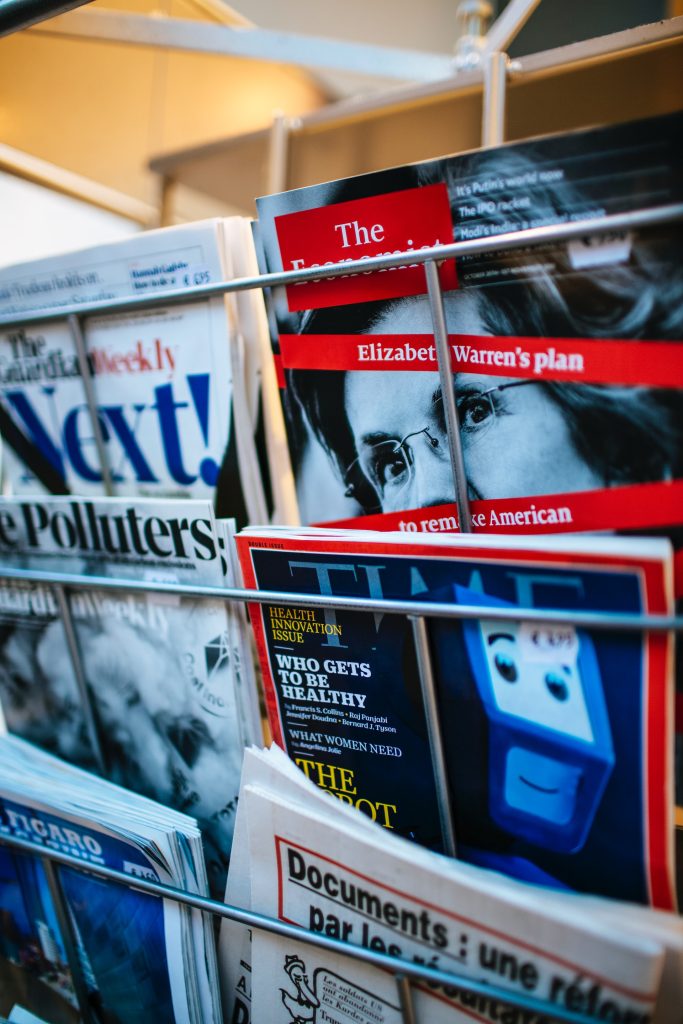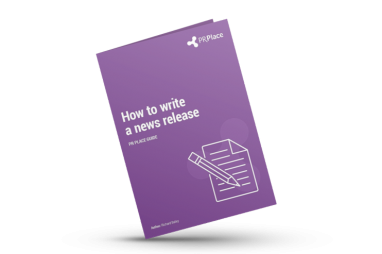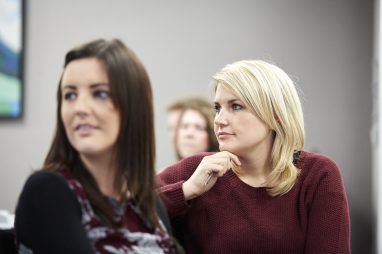Briefing: public relations news

About the author
Richard Bailey Hon FCIPR is editor of PR Academy's PR Place Insights. He teaches and assesses undergraduate, postgraduate and professional students.

‘Is it new or is it surprising?’
The national newspaper correspondent asked this question of me with the weary tone of one who’d used it several times already that morning.
I wilted. The story I’d been pitching by phone was certainly quirky, but didn’t otherwise pass this sniff test.
I learnt my lesson. Journalists have different measures of newsworthiness to those working in public relations. National news is a high bar to hurdle.
This briefing covers media relations basics for those who need bringing up to speed and tells the story of a surprising resurgence in the value of news in the digital age.
PR news 1.0: news in the mass media age
Let’s start with the journalist’s perspective on news before exploring the public relations challenges and offering up some suggested approaches.
To put it at its most stark, public relations stories cannot be news. The quotation attributed to twentieth century press baron Lord Northcliffe intended as training for journalists sums up this view: ‘News is what somebody somewhere wants to suppress. All the rest is advertising.’
In other words, journalists are trained to be suspicious of PR news and to ask what lies behind the story, and question what we’re leaving out.
To make the case with rather more subtlety, journalist and author Nick Davies makes the distinction between accuracy and truthfulness. Public relations news can at best be accurate, and at worst propaganda. Only a journalist can give the full 360 degree view on a news story because a public relations practitioner is necessarily a biased observer, being paid to represent the view of the organisation or client. So a public relations announcement about a restructuring would give the management perspective but would not include the opposing view from the trades unions (or vice versa if the news is coming from the union).
But why do they bite the hand that feeds them? You may well wonder this having been snapped at by a journalist. We offer them packaged news complete with accompanying images and access to spokespeople. No payment is required and though we hope for a name check or link we have no means of requiring or enforcing this (this process is described in academic texts as public relations providing an ‘information subsidy’ to the media). Nor can we ever snap back because we need to nurture our relationships with key media contacts.
The hard truth is that there’s finite space for news. Newspapers operate to fixed paginations and journalists are competing to have their stories accepted by editors. News bulletins are of fixed length with a standard running order. Newsrooms have been shrinking even while the public relations business has expanded, meaning that journalists are outnumbered many times over by public relations practitioners. That’s why it’s so hard to get your pitches even opened (this large study among journalists by BuzzSumo shows how challenging it is to make a successful pitch).
And even in the digital age when there are no physical constraints of pagination or bulletin length, attention remains finite. A journalist only has so much time to follow up stories, and the rest of us only have so much attention to give to the channel we’re watching. News is in competition with entertainment, a battle it’s doomed to lose over and over again because news is necessarily so negative.
Why so? Because the simplest way to understand major news stories – the ones that make the front page splash in newspapers and lead the broadcast bulletins – is that they’re deemed to affect everyone.
- The war in Ukraine affects everyone because it has caused a spike in oil and gas prices and has threatened international food supplies. It also raises the spectre of a wider war in Europe.
- The Covid-19 pandemic affects everyone because of the lockdowns and the slowing of the economy as well as because of the indiscriminate threat to health.
- The climate emergency affects everyone – though it’s easier to put this to the back of our minds as it affects future generations (perhaps as yet unborn) even more than it affects us.
Note how none of these major stories are conventional PR stories (though the United Nations might claim credit for convening the COP-27 meeting). That explains why public relations stories are very rarely the biggest stories of the day.
I won’t be alone in having been put under pressure to get a boss or a client onto the front page. The correct response is to suggest the two guaranteed routes to achieve this: to do something scandalous, or to pay a lot of money in the form of a front page advertisement.
But there are some qualifiers to this argument that major stories must affect everyone. There are now 8 billion of us on the planet but a national newspaper or TV channel only has to concern itself with its domestic audience. So the more local a story, the more prominently it’s likely to feature.
Then we need to explain the prominence of celebrity and entertainment news. Matt Hancock appearing in a reality TV show does not affect everyone (only his family, his parliamentary colleagues and his West Suffolk constituents can claim to be directly affected). Yet at the time of writing it’s a major talking point in the UK.
We need to consider the social purpose of news. It goes back to the evolution of our species.
The success of homo sapiens in colonising the planet has been dramatic and unexpected. We’re not the fiercest species; nor are we the fastest. For most of human history we’ve been vulnerable to wild animals that wanted to eat us; for all of human history we’ve been threatened by war, famine, fire and flood. Our enlarged heads mean that childbirth is especially perilous for mother and child.
That explains the first dimension of the social purpose of news: it’s to tell us about possible threats to our survival (now take a fresh look at the list above). The other dimension is that we’re tribal and social: we survived and succeeded because we collaborated with each other. Humans then expanded rapidly from the invention of farming and the development of cities – leading to more recent improvements in sanitation and healthcare.
In this context gossip and celebrity obsession are not idle: they’re a means for forging closer bonds between people. We talk about Matt Hancock because we can agree to feel outraged by his behaviour, and we don’t feel we can do any harm as we don’t know the person we’re gossiping about. Besides, the more we talk about him the more it feeds his need to be centre of attention, so fueling the celebrity machine which thrives on attention.
It’s challenging, but you now have a playbook for public relations news. Here are the principles:
- The news is almost never only about your company, because that will only ever affect a few people (employees and shareholders principally).
- News must be new and it should be surprising (see above). We can add to this that it can also be entertaining.
So we need to reverse-engineer our news to make it fit evolutionary psychology. As author Sam Knowles puts it: ‘things you could eat, mate with, or be killed by, deserve our attention.’ By extension, if you’re not tapping into one of these factors, your story does not merit attention.
In similar vein, author and trainer Andy Green recommends drawing creatively on the seven deadly sins. Does your news involve, invoke or promise any of the following: pride, greed, wrath, envy, lust, gluttony or sloth?
It works for popular and for promotional culture. There’s a song by Meghan Trainor that’s currently trending on TikTok. Take the first four lines and you can easily tick off three of the seven deadly sins:
‘I could have my Gucci on
I could wear my Louis Vuitton
But even with nothin’ on
Bet I made you look (I made you look)’
@billieshe41 Made ya look , girls wanted to try this one to #girls #kids #mom #madeyalook #megantrainor #dance #dancing #trend #challenge #trending #foryou #fyp #viral #momtok #wife #california #canada #vacation #messyhair #gucci #pov #now #daughters ♬ Made You Look – Meghan Trainor
Looked at another way, your news should be designed to evoke an emotional response in others. We really don’t care what your opinion is of your own news, which is why you should never include ‘we are delighted…’ in a quotation, or worse still, in the opening sentence of a news release (Company X is delighted – or worst of all – are delighted to announce…) Because, who cares?
So how can the public relations practitioner use this playbook? You have three options:
- Reengineer your news stories to focus on who is affected (eg customers)
- Push back at your managers so you only release your strongest stories to the media
- Continue to release news that’s all about the company – but only when it’s a regulatory requirement because the firm is listed on a stock market.
One final thought for those involved in traditional media relations. The hollowing out of newsrooms may appear to give a short-term advantage to PR teams who may be able to get their stories out there with less critical scrutiny, but it really is only a short-term win. If you’re finding it easier to get soft stories published, so are your competitors or opponents. And weaker editorial oversight scarcely engenders trust or serves the public. Which is another reminder that for many decades there was a balance of power: public relations practitioners needed journalists while journalists needed (good) public relations contacts.
PR news 2.0: news as content in the age of digital media
So far, I’ve offered a public relations-centred narrative that presents public relations in dynamic tension with journalism. This approach prevailed throughout the twentieth century.
A twenty-first century narrative revolves around the PESO model. Earned media retains special significance in the Google-centred digital world, as I’ll explain, but it works alongside paid, shared and owned media. Journalists no longer have a monopoly on news. Public relations has other channels for reaching the public.
Google can be viewed as a reputation engine, so our energies should go into creating and sharing content deemed to exhibit Expertise, Authoritativeness, and Trustworthiness (E-A-T). This isn’t easy because there’s an endless stream of content being produced while our attention spans remain finite. Indeed, TikTok’s success with videos up to 15 seconds long by default suggests a shrinking of attention spans, as does the average length of the instrumental intro to a hit song in the age of music streaming. Stairway to heaven? Stairway to obscurity more likely.
Google-owned YouTube exemplifies the attention challenge. Outside of bored teenagers, surely no one turns to YouTube as an entertainment channel in the way they might currently turn to TikTok. And yet surely everyone with a smartphone or an internet connection has found themselves directed to a YouTube video either through recommendation or as a result of searching out a specialist interest or how to solve a specific problem.
This leads us to my golden rule of social media content:
Be interesting. And if you can’t be interesting, be useful.
But what of news? As we’ve seen, news is by definition interesting (you may not find the distinction between fiscal and monetary policy at all riveting, but you do care whether you’ll be richer or poorer as a result of decisions on taxation and public spending taken in Downing Street).
Seen another way, news is viral content in a way that so little of our social media content is. News remains a great way to amplify messages and reach new audiences. The BuzzSumo study cited earlier shows that journalism content has more resonance on social media than non-journalism content – because it’s more emotionally charged.
News has the added bonus that if shared through high domain value sites like major media websites, a link can add greatly to SEO value. And the humble news release, ostensibly only created with journalists in mind, is now shared via our (owned media) websites and is just the sort of content that Google admires because it comes from the horse’s mouth and so should be authoritative and it’s time-stamped and so demonstrably current unlike so many other webpages.
Journalists may have been professionally sceptical about our news releases, but Google’s bots view them more positively. In this light, we can view media coverage as a bonus of producing a news release rather than its sole purpose.
Note the shift of emphasis. News remains important in the digital ecosystem, but the emphasis is now less on journalists than on Google.
There’s a joke told in digital PR circles that illustrates this. Traditional PR person swans around the office holding up the newspaper containing a story about their brand or client. Digital PR person asks sceptically: ‘what’s the domain authority of that piece of paper?’
Indeed, a generation has grown up in digital PR for whom the pursuit of links has replaced the previous generation’s pursuit of coverage. To many of them, journalists are just another type of influencer subject to ‘outreach’ in pursuit of a campaign’s goals.
And yet news retains its unique power to cut through and go viral, qualities that are more important than ever given the abundance of content being created, the proliferation of channels available to us, and – I’ll mention it again – our restricted attention spans.
So news is not only important for the SEO backlinks it can generate, but for the attention it commands. And so the dark art of the PR stunt has been reinvented for a new age, by people with no knowledge that this is an old – and now discredited – approach.
Mark Borkowski’s exhibition and book celebrating the art of the PR stunt through history was called Improperganda. The book was published in 2000, not long after the birth of Google and well before the emergence of the digital PR and SEO industry.
Along with stunts, which are designed for virality because they’re so often encapsulated in an image, this new generation has also discovered newsjacking. We can’t always create headline news (see above), but we can always try to insert our brand or business into a breaking news story and thus hijack the news for our promotional or SEO purposes.
https://twitter.com/10Yetis/status/1592838393205227520
Where the earlier narrative centred around the relationship between journalists and PR practitioners, then the current narrative in the PESO world involves the language of branding and marketing.
Just as I had argued that news is rarely about your company, I note how a popular business author makes the same case when it comes to brand storytelling. In Building A Story Brand Donald Miller argues that you are not the hero of your own story.
‘Customers don’t generally care about your story; they care about their own. Your customer should be the hero of your story… The customer is the hero and we are their guide.’
He also argues, in echoes of my argument about evolutionary psychology, that great stories are about survival – physical, emotional, relational or spiritual.
News writing is just one genre of storytelling, but there are many more that we need to deploy if we are to explore the opportunities of the PESO model.
You may question why I’ve taken more than 2000 words to discuss public relations news, given my emphasis on shorter attention spans. Well, here’s another irony from the age of Google: there’s so much short-form content that long-form content can signal additional credibility. EAT, sleep, repeat.


